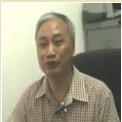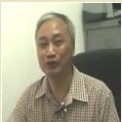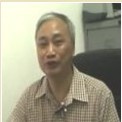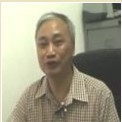-
History & Society
- Education in Pre-war Hong Kong
- History of Taikoo Sugar Refinery
- Hong Kong Products Exhibition
- Local Festivals Around the Year
- Post-war Industries
- Pre-war Industry
- The Hong Kong Jockey Club Archives
- Tin Hau Festival
- Memories We Share: Hong Kong in the 1960s and 1970s
- History in Miniature: The 150th Anniversary of Stamp Issuance in Hong Kong
- A Partnership with the People: KAAA and Post-war Agricultural Hong Kong
- The Oral Legacies (I) - Intangible Cultural Heritage of Hong Kong
- Hong Kong Currency
- Hong Kong, Benevolent City: Tung Wah and the Growth of Chinese Communities
- The Oral Legacies Series II: the Representative List of the Intangible Cultural Heritage of Hong Kong
- Braving the Storm: Hong Kong under Japanese Occupation
- A Century of Fashion: Hong Kong Cheongsam Story
Geography & EnvironmentArt & Culture- Calendar Posters of Kwan Wai-nung
- Festival of Hong Kong
- Ho Sau: Poetic Photography of Daily Life
- Hong Kong Cemetery
- Sketches by Kong Kai-ming
- The Culture of Bamboo Scaffolding
- The Legend of Silk and Wood: A Hong Kong Qin Story
- Journeys of Leung Ping Kwan
- From Soya Bean Milk To Pu'er Tea
- Applauding Hong Kong Pop Legend: Roman Tam
- 他 FASHION 傳奇 EDDIE LAU 她 IMAGE 百變 劉培基
- A Eulogy of Hong Kong Landscape in Painting: The Art of Huang Bore
- Imprint of the Heart: Artistic Journey of Huang Xinbo
- Porcelain and Painting
- A Voice for the Ages, a Master of his Art – A Tribute to Lam Kar Sing
- Memories of Renowned Lyricist: Richard Lam Chun Keung's Manuscripts
- Seal Carving in Lingnan
- Literary Giant - Jin Yong and Louis Cha
Communication & Media- Hong Kong Historical Postcards
- Shaw Brothers’ Movies
- Transcending Space and Time – Early Cinematic Experience of Hong Kong
- Remembrance of the Avant-Garde: Archival Camera Collection
- Down Memory Lane: Movie Theatres of the Olden Days
- 90 Years of Public Service Broadcasting in Hong Kong
- Multifarious Arrays of Weaponry in Hong Kong Cinema
-
History & SocietyGeography & EnvironmentArt & Culture
-
View Oral History RecordsFeatured StoriesAbout Hong Kong Voices
-
Hong Kong Memory
- Collection
- All Items
- Oral History
Recently VisitedOral History

- Relocation and decline of Hong Knog knitting industry, Two unsuccessful attempt to start a factor...
Hong Kong’s textile industry grew strongly between the 1950s and 1990s which began to decline after 1997. When the government began introducing labour regulations such as limiting the working hours of female workers and prohibiting female workers from working overnight in the factories, Au Kwan Cheung began to hire men only to run his 24-hour operations. With the amount of loans too small and repayment periods too short for small and medium enterprises, Au Kwan Cheung felt that the government had not offer enough support for small manufacturers. Around 90% of local garment factories had already been relocated to the mainland where there was sufficient cheap labour to produce large quantities of garments. Dyeing factories had also been severely hit by the regulation of sewage management and other environmental protection measures in recent years. With operations becoming more difficult, most dyeing factories have now followed the footsteps of garment factories to move to the mainland.
Dyeing factories that stayed in Hong Kong were mostly small-scale operations applying technology that remained at the level of the 1970s-1980s. As bleaching and dyeing products did not meet specifications and prices were quite high, business became very difficult. Au Kwan Cheung shipped most of his fabrics to the mainland for bleaching and dyeing only doing small amounts in Hong Kong occasionally. Garment factories which had already relocated to the mainland faced many import and export restrictions and complicated procedures. This was especially true when shipping fabrics produced in Hong Kong to China for bleaching and dyeing. In doing so, garment factories needed to apply for a “customs manual” for listing out the fabric types and quantities. As applying for a customs manual involved a lot of procedures, those garment factories who wanted to save themselves the trouble would simply subcontract the processing job to a mainland knitting factory which would work with a mainland dyeing factory. Such practices inevitably had adverse effect on Hong Kong’s knitting industry. The local knitting industry began to decline after 1997 and Au Kwan Cheung’s factory began losing money in 1999. Au Kwan Cheung estimated that the number of local knitting factories that were still in operation at the time of interview was less than 20, a drop of 95% from the industry’s peak. At present, Au Kwan Cheung’s knitting factory only took local orders.
Following the footstep of local garment and dyeing factories’ relocation to the mainland, Au Kwan Cheung had tried twice to set up factories in China in the 1990s but both attempts had failed. What he did was like this: through the introduction of a business friend, he co-operated with an enterprise in Zhongshan to set up a knitting factory there in 1990. Sadly, he had no real control over the end-to-end production process and the business performance was poor. There were also accounting problems. Considering the factory to be unviable, Au Kwan Cheung gave it up within just two years. A few years after the failure in Zhongshan, Au Kwan Cheung tried again and set up a wholly-owned factory in Foshan’s Zhangcha District where there was a concentration of small local knitting factories. Relocating half of his machinery at Hong Kong factory to China, he tried to carry out production in both places at the same time. As he felt he was unable to compete with his mainland counterparts, he finally ceased operating the Foshan factory after four or five years. Au Kwan Cheung estimated that the success rate of knitting factories that had relocated to the mainland was just 30 percent.
As there was an abundance of knitting factories in China, Au Kwan Cheung’s garment factory customers would not necessarily continue their co-operation with him after their operations were relocated to the mainland. The northward-relocated Hong Kong knitting factories did not really trust their new mainland masters. Many skilled masters went to work at their employer’s mainland factory. The monthly wage for these Hong Kong masters was more than $10,000 while that of a mainland master was just $1,000. Additionally, Hong Kong investors faced many restrictions to operate a factory in the mainland. They had to hire people to handle procedures such as setting up fire safety measures and reporting tax returns. As production costs were not much reduced due to the above complications, they were also less competitive than mainland’s individually-owned factories. Au Kwan Cheung observed that Hong Kong knitting factories were more experienced, understood customer requirements better and their knitted fabrics were more superior in terms of quality than that of their mainland counterparts. That said, most garment factories put their focus on price only. Although the quality of mainland’s fabrics was not of good quality, they offered lower prices and so many garment factories still found it more profitable to place orders with them. Au Kwan Cheung believed that the only advantage Hong Kong’s current knitting industry had was that the tax rebate on cotton yarns imported to Hong Kong made local grey fabrics cheaper than those from China. However, there was a lack of local dyeing and garment factories to carry out the necessary work processes. As a result, Au Kwan Cheung believed that if the policy and operating environment remained unchanged, the prospects for the local knitting industry were not optimistic.

- Countermeasures of knitting factory owners after textile industry going to decline, Two unsuccess...
After the Beijing pro-democracy movement in 1989, there was braver steps by the government to implement economic reforms and a faster pace to open up China’s markets. This had accelerated the movement of local garment and dyeing factories’ from Hong Kong to the mainland. In the past, smaller garment factories in Sham Shui Po carried out their production and sales activities upstairs in their workshops in residential buildings. When small factories’ production lines moved to the mainland, only the wholesale section remained in Hong Kong. At present, less than ten garment factories remained in Hong Kong. When the government required manufacturers to adopt sewage treatment measures in the 1990s, the local dyeing factories faced a lot of restrictions. This in turn prompted the northward relocation of the bleaching and dyeing industry. With the disappearance of local garment and dyeing factories, the knitting manufacturers which relied on them found it harder to survive after 1997. Faced with the trend of northward relocation, Au Kwan Cheung lost up to 90% of his customer base. At present, only around ten knitting factories remained in Hong Kong.
Steadily losing customers, Tai Hing Knitting Factory reduced its labour force and stopped purchasing new machines. Au Kwan Cheung was finally forced to follow the trend and set up operations in China in the 1990s. Following the introduction of a business friend, Au Kwan Cheung’s first attempt was a joint venture factory in Zhongshan with a local entity. Due to differences of opinion with the local partner, Au Kwan Cheung gave up a year later as he felt the business was not profitable. He subsequently set up a wholly-owned factory in Foshan, renting a 10,000-square-foot plant and moving some machines from Hong Kong to there. While the bulk of Tai Hing’s manufacturing moved northward, the company still maintained some production in Hong Kong. As Au Kwan Cheung still had to take care of these Hong Kong operations, he was unable to manage both factories, finally closing the operation in Foshan. Requiring a hands-on approach to manage his investments in the mainland, rather than delegating the work to others, Au Kwan Cheung found it difficult to adopt Hong Kong style of management in China’s environment. After cutting the business in the mainland, his Hong Kong factory gradually shrank in size as he sold the machines off one by one. Even when his workforce was cut down to just three workers, Au Kwan Cheung still found it difficult for the operation to survive.
At the time of interview, Au Kwan Cheung’s knitting factory continued with a small volume of production, producing fabrics only for local demand. This generally involved fabric samples in small quantities and urgent orders for under-layer and inner-layer fabrics, for example. As mainland knitting factories focused on mass production, they would not take up these small orders, leaving one last tiny survival space for local factories. In recent years, Au Kwan Cheung had stopped developing new fabrics. Lacking advanced machinery, it was difficult for him to produce these new products in larger quantity. South Korea and Taiwan produced a large number of new products and their exports to Hong Kong put added pressure onto local manufacturers. Lacking sources of raw material, Hong Kong could not compete with the imports from these countries. In addition, even if new fabrics were successfully developed, their design might also be copied for production in China. Even though he had launched several new fabrics, Au Kwan Cheung was unable to attract a good size of orders. At present, he just waited for fabric samples from customers, taking orders within his ability. In addition to maintaining a small production business, Au Kwan Cheung also provided intermediary services for the garment factories that had moved northward by liaising with mainland’s knitting manufacturers on their behalf for processing yarns into cloths.

- Founding Tai Hing Knitting Factory in Tai Kok Tsui, Introducing Chemical fibers as new raw material
After moving his squatter factory from Fuk Wah Street to Tai Kok Tsui, Au Kwan Cheung’s father had added a modern knitting machine to increase output. However, his father had already grown old and was not interested in investing in more machinery. Sadly, when he eventually passed the business on to Au Kwan Cheung’s younger brother, it was technologically too backward to survive for long. While Au Kwan Cheung did not take over his father's factory, he and a friend of his founded another small knitting factory which was named Tai Hing Knitting Factory, Limited and was close by in Tai Kok Tsui. Tai Hing was equipped with the then most advanced knitting machines and used cotton yarns and chemical fibers as raw materials. Chemical fibers became available in the late 1960s, becoming a new raw material for the textile industry. Nylon, polyester and terylene were the main synthetic fabrics at that time. As they offered the advantage of producing less dust during knitting, it was easier to clean the machines. The knitting principles and machinery of synthetic fabrics were similar to those of cotton yarns and were used to produce garments such as T-shirts and sport shirts. While Au Kwan Cheung was responsible for the technical aspect, his business partner who had worked in a chemical fiber import company as salesman was familiar with the marketing aspect of synthetic knitting. As the start-up capital of the two men was less than $100,000 and each machine cost about $30,000, they had to purchase their machines in two batches. Additional equipment could only be added after the company began making a profit. Tai Hing engaged solely in knitting fabrics, with raw materials supplied by the garment factories when orders were placed. Some of Au Kwan Cheung’s clients were his father’s regular customers. His partner also knew many garment factories. Coupled with a big demand for fabrics in those years, the new factory had no worry about business order. Tai Hing later was able to handle sub-contracting orders from larger garment factories.

- Expansion of Tai Hing Knitting Factory in the 1970s, Tai Hing’s heyday in the 1980s and 1990s
Au Kwan Cheung and his partner founded Tai Hing in 1969, which occupied the 1,000 square feet unit on the tenth floor of a factory building in Tai Kok Tsui. The company later moved to the fifth floor of Yee Tak Factory Building in Cheung Sha Wan in 1973/1974, which was a unit of 2,000-3,000 square feet. As relocation and renovation had used up large amounts of capital, Au Kwan Cheung was initially unable to buy new machines. His wife also had to help at the factory after its relocation. The joint venture broke up two or three years after the factory relocation and Au Kwan Cheung became a sole proprietor of Tai Hing. A few years later, he took out a further 3,000 square feet of space next door and expanded the factory to over 5,000 square feet. To pay for new machines which cost several hundred thousand dollars each, Au Kwan Cheung borrowed loans from a loan company which he repaid by installments. He also received old machines abandoned by his father’s friend who closed down his own factory. By that time, Au Kwan Cheung’s factory had more than 20 machines and employed four to five workers for the day shift and three workers for the night shift. Four male workers took care of the machines and two female workers wound the yarns at noon to make it ready for the night shifts.
The years between the 1980s and 1997 were Tai Hing’s heyday. 60% of the company’s finished fabrics were used for garment products exported to Europe and the United States. The remaining 40% were used for clothing to be sold locally. Exported garments were generally produced in large garment factories. These bigger manufacturers had precise cost calculation and had a stable demand for fabrics. Au Kwan Cheung recalled that orders from two to three large garment factories would be sufficient to maintain Tai Hing’s profit margin. Hong Kong garment workers of the 1960s to 70s only cared about having enough to pay for food and clothing and so they didn’t demand for high wage. With low production cost, Hong Kong’s garment factories mostly produced inexpensive garments that attracted orders from Europe and America. The factories that produced for local demands made fashion garments. Though they were mostly small factories, they were more willing to pay higher prices to buy new fabric types. Fashion garment factories at Sham Shui Po seldom ordered grey fabrics, but required dyed and finished fabrics instead. Apart from knitting grey fabrics, Au Kwan Cheung’s factory also outsourced processing to dyeing factories. Tai Hing continued its operations until 2000. As there were many more orders during its heyday, sometimes its 5,000 square feet workshop was not enough to finish these orders. Especially at times when the production was under tight schedule, Au Kwan Cheung had to ask his business friends to do his favours by finishing some of the orders. He repaid these favours by helping out his business friends when they in turn could not meet their orders.

- Customers of Tai Hing Knitting Factories, Upstairs home garment factories in Sham Shui Po, Squat...
Tai Hing Knitting Factory's major customers were garment factories of two categories: production for local demand and production for export. Squatter garment factories in Sham Shui Po and Cheung Sha Wan were mostly manufacturers for local demand. Rather than producing on demand, these factories made garments and waited for fashion retailers to pick and purchase the finished products. The retailers were usually the boutique operators at shopping malls and did not have their own production line. To replenish best selling fashion items that ran out of stock, retailers would sometimes visit garment factories in person, waited by the side of the garment workers and pick the products as soon as they were finished. As local garment factories produced goods before selling them, they had to bear the risk of losing money if the products did not attract attention. For this reason, most local garment factory owners had a good eye for fashions that could sell. Alternatively, such owners would only produce a small quantity first and test it out in the market. If sales were good, garment factories would be attracted to place orders. Some squatter garment factories also handled garments servicing orders from European and American customers placed through trading companies. In those years, small local and export garment factories tended to concentrate in particular districts. The majority were later relocated to the mainland. Those still having local production were spread to Tsuen Wan, Kwai Chung, Kwun Tong and other districts.
In the 1980s, Nam Cheong Street and Yu Chau Street had high concentrations of squatter garment factories. Many manufacturers set up their factories upstairs in residential buildings resulting that sewing workshops were spread on different floors. A typical squatter factory consisted of a team of husband and wife working at home with a few workers and several sewing machines including overlocker types. All garments produced were then placed in the same premises waiting for wholesaling. Operators of retail stores knew the address of these upstairs workshops and would go there to select and buy goods from there directly. Between the 1980s and 90s, wholesale fashion factories were Tai Hing's major customers, accounting for around one third of its knitting factory’s turnover.
Since China’s economic reform and the adoption of open policy, these upstairs factories had moved their production to the mainland. The 1980s were booming years for Hong Kong’s garment industry. During this period of time, squatter factories which had already relocated to the mainland set up outlets in Hong Kong to display their samples in the ground floor shops on Cheung Sha Wan Road and Castle Peak Road in Lai Chi Kok. They also established offices at the back of their shops to make it quicker and easier for customers to place orders. After the squatter factory outlets moved to street-level shops, their customers were no longer limited to local buyers. Buyers from Africa and Southeast Asia also came to select goods and place orders. These street-level outlets were a convenient trading ground where buyers could find garment manufacturers and instantly select goods and place orders. A ground floor shop also made the mainland manufacturers look more reliable by enabling customers to keep in contact with them in Hong Kong after placing orders. Rents for street-level shops were expensive, with large shops often attracting tenants who were willing to pay over $100,000 a month. As a result, they only engaged in export wholesaling and not garment retailing.
The early 1990s were good years for Hong Kong’s knitting industry. Having studied foreign magazines to learn about popular fabric types, Au Kwan Cheung began to develop stretchable fabrics, send small quantities of these cloths to dyeing factories for dyeing and finishing and then market them to fashion garment factories. New fabric types were mainly promoted to the local market. Fashions made with new fabric materials could be sold immediately at street-level outlets on Cheung Sha Wan Road in Sham Shui Po. Such a practice enabled the quick testing of market responses. If marketing was carried out overseas, there was no such convenience for a local manufacturer like Au Kwan Cheung to test out his research outcome.
Copyright © 2012 Hong Kong Memory. All rights reserved.
| Set Name |





